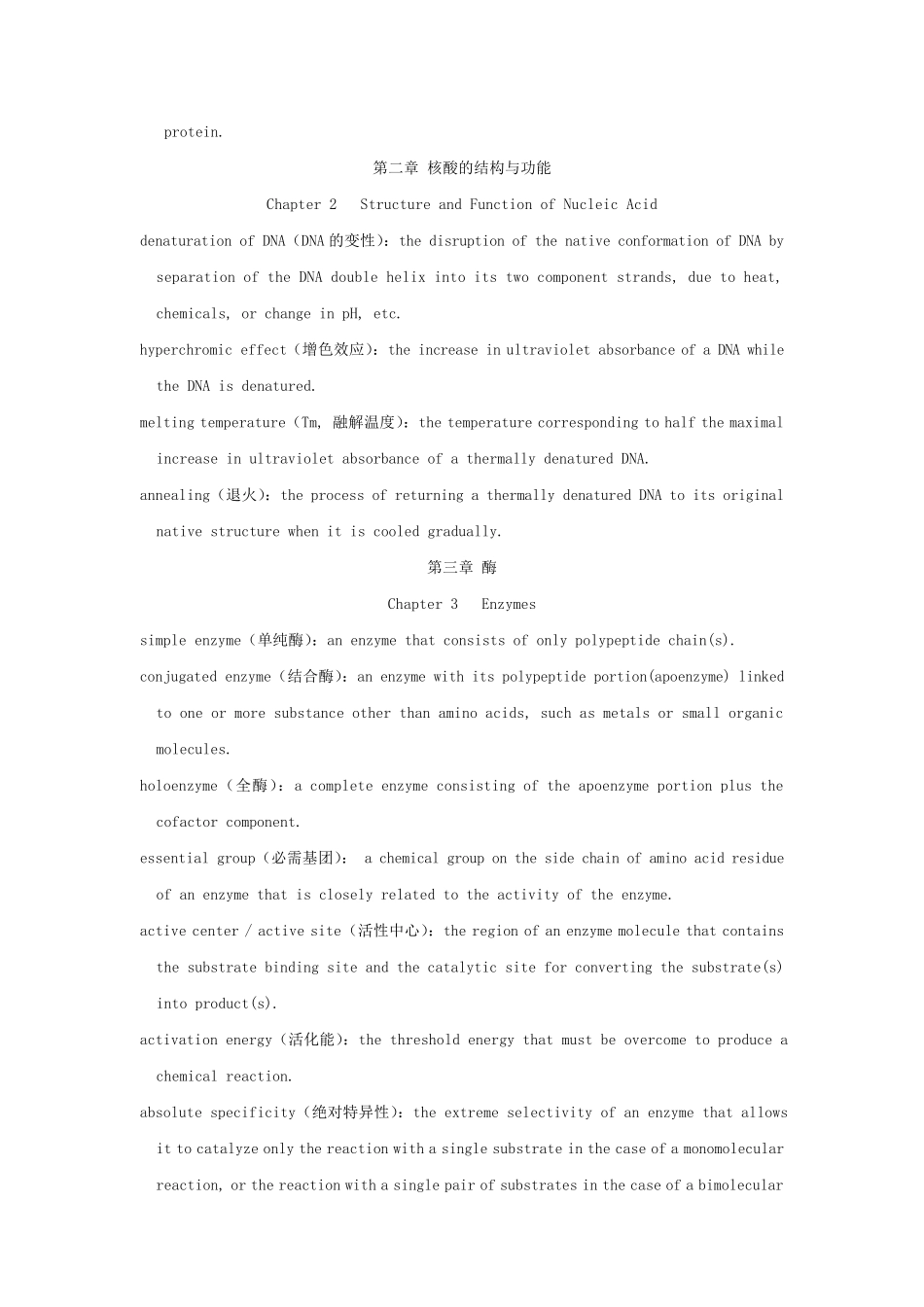名词解释 Glossary 第一章 蛋白质的结构与功能 Chapter 1 Structure and Function of Protein peptide bond(肽键):a covalent bond linking the α- amino group of one amino acid and theα-carboxyl group of another in a protein molecule. peptide(肽):a molecule containing two or more amino acids linked by peptide bond. primary structure of protein (蛋白质的一级结构):the amino acid sequence of a polypeptide. secondary structure of protein(蛋白质的二级结构):the spatial arrangement of local portions of a polypeptide chain. tertiary structure of protein(蛋白质的三级结构):the spatial arrangement of all the atoms of a protein or a subunit. quaternary structure of protein(蛋白质的四级结构):the spatial arrangement of a protein that consists of more than one folded polypeptide chain or subunit. subunit(亚基):an individual polypeptide chain that associates with one or more separate chains to form a complete protein. motif(模序):a substructure formed with two or more secondary-structure peptide segments that are drawn close to each other. domain(结构域):a region within a protein, particularly within a large polypeptide, that functions in a semi-independent manner. positive cooperativity(正协同效应):an effect that the binding of one ligand to a protein facilitates the subsequent ligand binding. allosteric effect(变构效应):an effect that a small molecule, called an effector, noncovalently binds to a protein and alters its activity. isoelectric point(pI)of protein (蛋白质的等电点):the pH at which a protein has an equal number of positive and negative charges and hence bears no net charge. denaturation of protein(蛋白质变性): the disruption of the natively folded structure of a protein caused by exposure to heat, radiat...


